Disclosure: Meeple Mountain received a free copy of this product in exchange for an honest, unbiased review. This review is not intended to be an endorsement.
Magical schools are a constant theme across literature and gaming, and Pathfinder has its own set of academies ready for avid learners of the arcane. In Pathfinder Lost Omens Rival Academies, we learn more about six major players in the magical education space and glean some insight into their relationships with each other. These institutions attract prospective students from far and wide to enroll in their programs.
Pathfinder Lost Omens Rival Academies Overview
Lost Omens Rival Academies takes place during the Convocation, a meeting of the educational institutions of Golarion. It is hosted in Nerosyan, the capital city of Mendev, a region known for its constant crusades into the Worldwound. The goal of the Convocation is simple: to assist in the collaboration and sharing of knowledge across disciplines. They also seek to prevent the tragedies of the eradication of an entire culture, much like what happened to Sarkoris when the Worldwound opened.
This installment in the Lost Omens line is heavy on lore. There is in-depth information on each of the six sponsor schools—the Academy of the Reclamation, Cobyslarni, the Kitharodian Academy, The Magaambya, the Monastery of the Unbreaking Waves, and the University of Lepidstadt.
For a book with “Rival” in the title, I expected there to be a lot more discussion about actual rivalries and beef that these schools might have with one another. Instead, the general feeling is that although the Convocation is designed to be a forum of idea sharing, there are inherent levels of competition that crop up due to each school putting their best foot forward and showing off what they know. Each of the schools has a few paragraphs dedicated to their rivalries, but it feels more like an afterthought.
Following the section on each of the magic schools is a section dedicated to individual attendees of the Convocation. There are 12 full-page spreads for the more prominent and famous invitees, such as Zenda Modic from the Synostosis Academy in Yleb and Ehmik Naaruj from the Hall of Lambent Oaths. Like the rest of the book, these pages are written in first-person, which gives you a feel for their voice and disposition. You’ll also find one mechanical rule for each of the twelve major invitees, in the form of an Item or a Spell.
Towards the end of the book is the most worthwhile section—eight pages dedicated to new Runelord rules. Rise of the Runelords was the first Adventure Path that Paizo published with Pathfinder First Edition, eventually earning two follow-up stories to complete the Runelord trilogy. Runelords are a prevalent part of Golarion’s history, and finally getting some mechanical rules around creating your own Runelord in Second Edition is a big deal.
Lastly, the book closes with some guidance on how you can run the actual Convocation in your campaigns if you feel like incorporating it. With only four pages dedicated to it, there’s a meager framework for the event but it would require a lot of preparation from the Gamemaster. I’d compare it to filling in the blanks for a city-based campaign, where you need to develop many of your own NPCs and storylines to keep the players interested and invested.
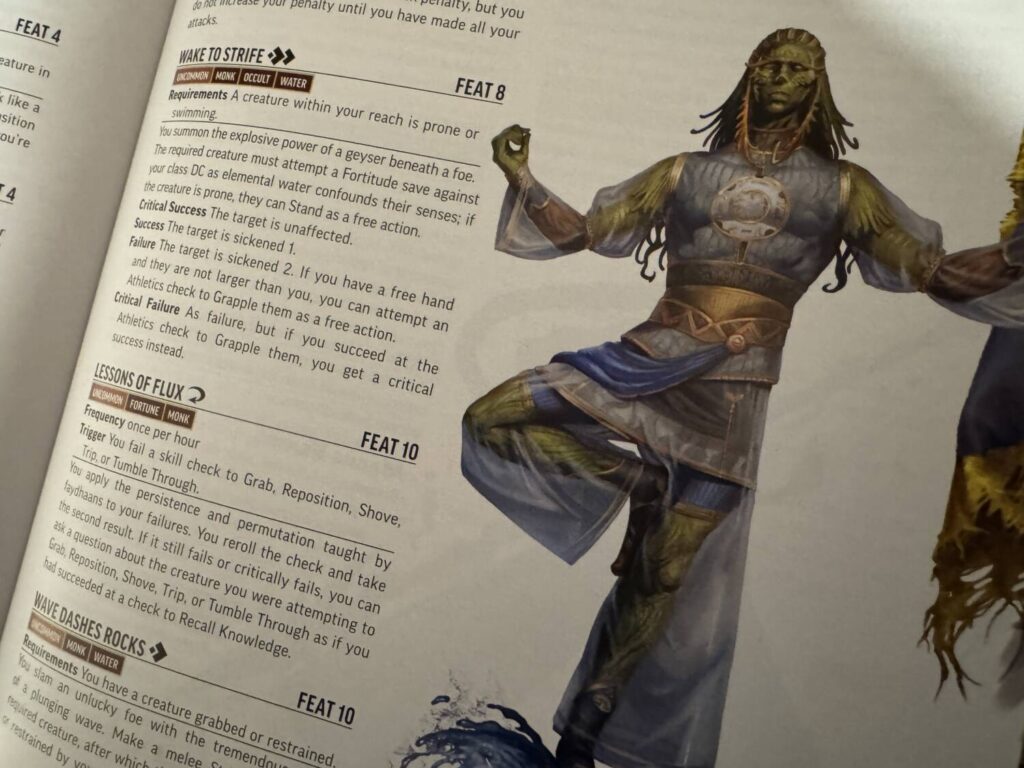
Lost Omens Rival Academies: Back to School
If the idea of magical schools interests you, then Lost Omens Rival Academies has that in droves. Overall, it’s a shorter book that clocks in around 120 pages, and there are only features on six of the major Golarion schools. Creating a character whose background is tied to an educational institution is a common trope for players, so this book can provide extra detail and context for them that can help flesh out their backstory.
This is a Lost Omens sourcebook, which means that the focus is on the lore as opposed to the mechanical stylings of the system. Even so, I wasn’t floored by many of the options in the book. I did like some of the spells for the Storytellers of The Magaambya, who have multiple spell options that scale depending on how many actions you spend to cast them. Utility is always important in spellcasting, so spells like The Four Hunters that can give benefits to yourself, a single ally, or your entire party are a real blessing.
My favorite school of the lot is the Monastery of the Unbreaking Waves. As you may have guessed from the name, the school focuses on the elemental arts. I was drawn to the options for the Resurgent Maelstrom Magus, which leverage water magic for power. They also utilize improvised weapons, which is not something that players gravitate towards. There’s a sturdy groundwork for a fun character to be had by taking that study.
I felt like there was a disproportionate amount of whitespace in the book, like the writers were stretching to hit their page count. There are a number of pages where there is a little blurb in the margins but the rest of that section is blank.The blurbs are insightful, showing a symbol from one of the major schools and then offering that school’s perspective on whatever the page is currently discussing. It’s essentially flavor text for flavor text.
One nice benefit of Lost Omens Rival Academies is that there is a brief section on Sarkoris and Mendev as they stand presently. This region has largely been devoid of information and detail since the closing of the Worldwound, and so I’m sure a lot of players will appreciate any crumbs they can get. The section outlines a smattering of key locations that serve as plot hooks.
Because of the first-person nature of the narration, I got a better sense for the personalities of the writers than I necessarily did with the lore. When injecting a lot of flavor into the narrative, it can overshadow the content, which is sometimes the case here. Paizo has done this in some of their other books and this was one of the first times that it felt more distracting than helpful.
If you are interested in magic schools, the Mwangi Expanse has a lot more detail on The Magaambya, and I found that book to be much more interesting in general with its breadth of content.
There’s already such a large emphasis on magic in Golarion and the Pathfinder Second Edition system that I don’t really get excited about having more of it. I like it more when magic and spellcasting push boundaries, and Lost Omens Rival Academies doesn’t scratch that itch. It’s an easy read, but not one that I anticipate referencing very often in the future.
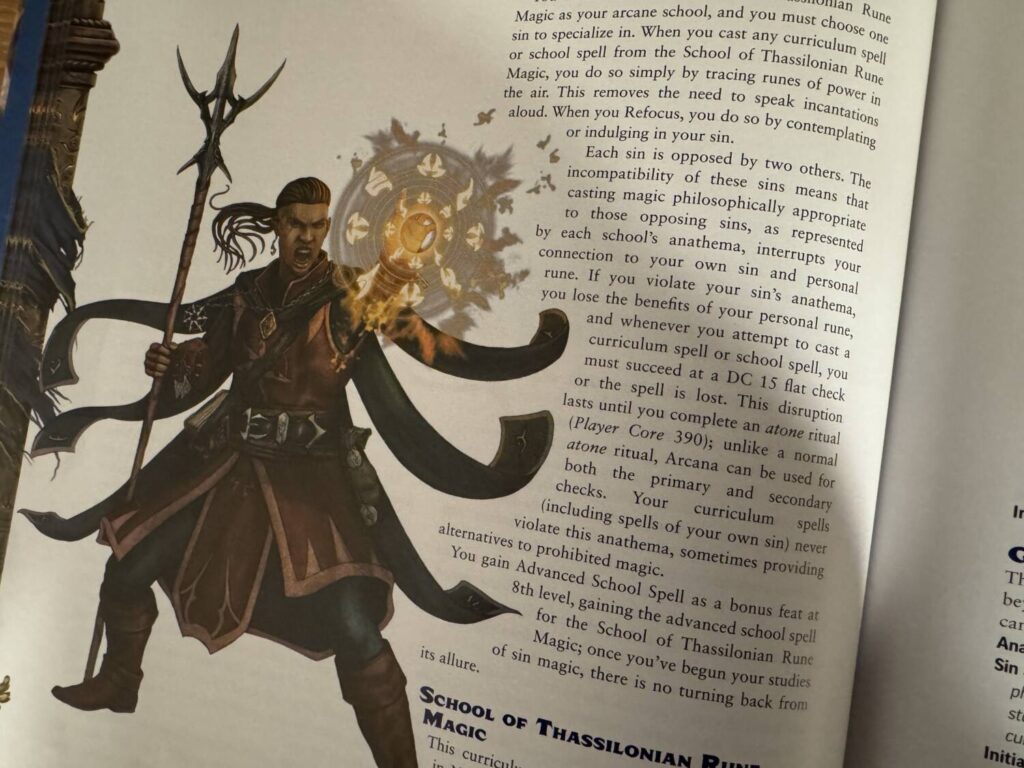


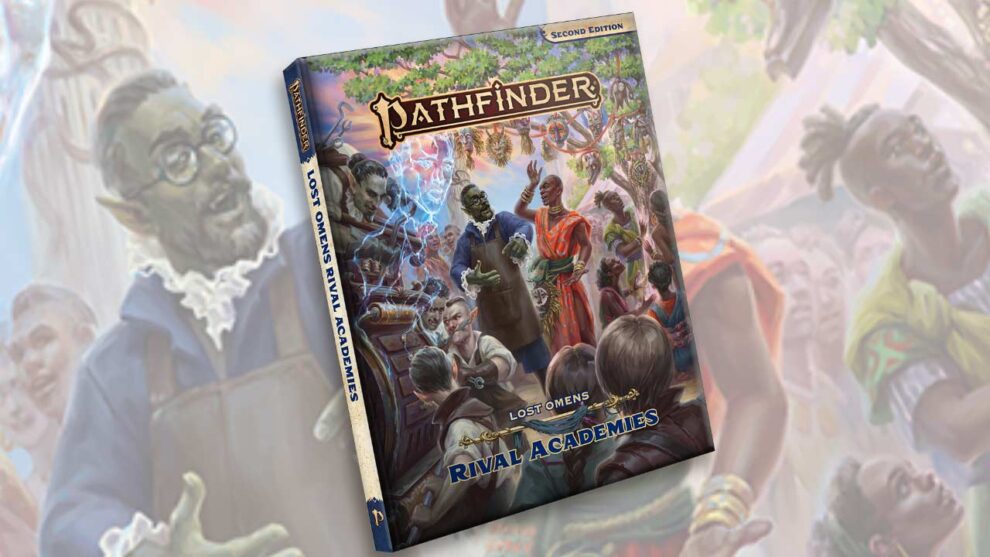

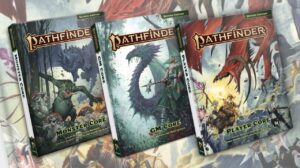


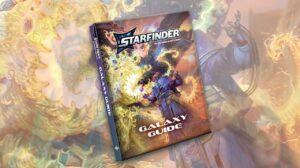




Add Comment